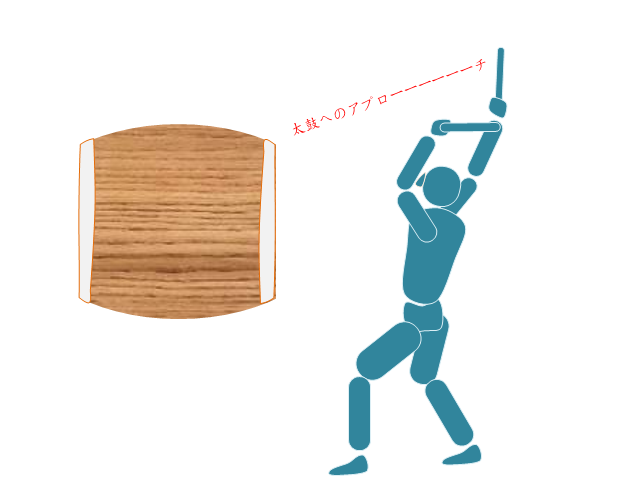My master often used to said that all my body moving were set, during first days of my taiko life. These days, I understand how set was and how flexible is. I still am feeling I am still learning, though.
Anyhow, having rotational hip and pumping legs, you can have dynamically bowing body. Up, down and rolling of your legs and hip lead your upper body nice. It is important for sports that your hip and legs are light, flexible and strong. It is exactly same for taiko playing.
 Like this picture, range of movement of bachi(sticks)'s is such wide, if you move legs and hip as much as possible, Of course, to have wider range of movement, you need to keep your upper body and both arms very relax. For example, when you are intending to move right arm very wide, naturally left arm is also swinging widely as keeping balance. Then left arm continue to move widely and hit taiko! All motion have relation and linkage.
Like this picture, range of movement of bachi(sticks)'s is such wide, if you move legs and hip as much as possible, Of course, to have wider range of movement, you need to keep your upper body and both arms very relax. For example, when you are intending to move right arm very wide, naturally left arm is also swinging widely as keeping balance. Then left arm continue to move widely and hit taiko! All motion have relation and linkage.I like it.















